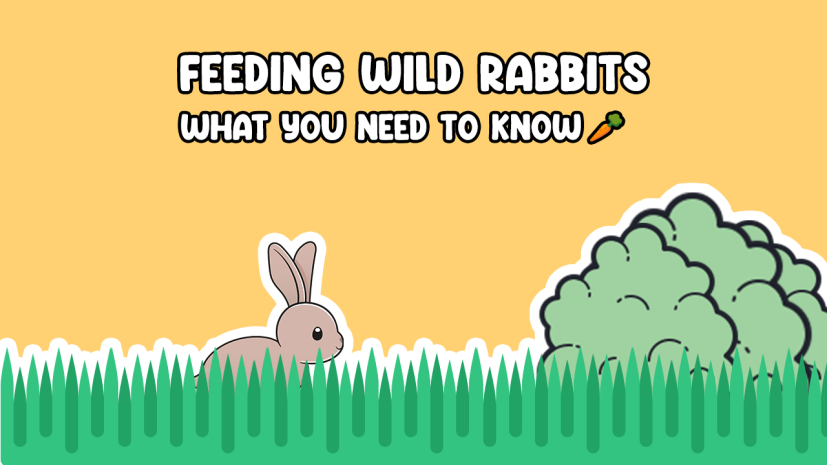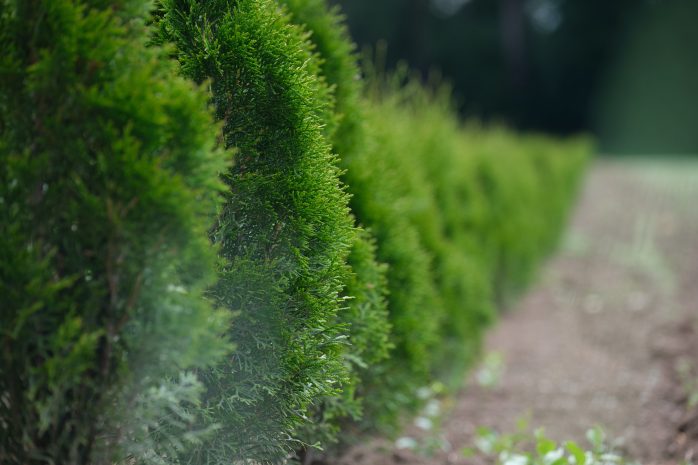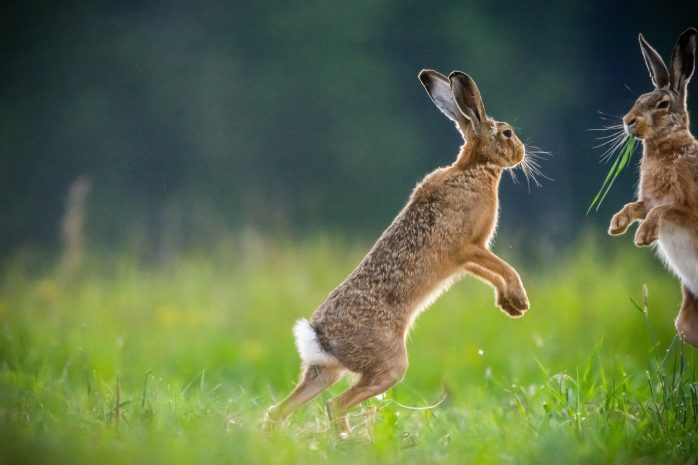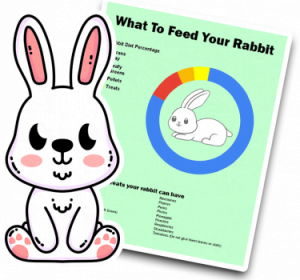
You might be tempted to feed them if you’re lucky enough to live near a park or in a rural area where wild rabbits roam free.
Feeding wild rabbits can be a fun and educational experience, but it also comes with risks. In this article, we’ll explore the benefits and potential hazards of feeding wild rabbits, what to feed them, and how to do it safely.
Rather than directly feeding wild rabbits, a more sustainable and practical approach is to provide them with plant resources such as shrubs and greenery. This gives them a natural habitat to forage and live in and promotes their physical and mental health. Year-round plants in your garden can be a great way to achieve this and require minimal maintenance. By creating a safe and healthy environment, you can help support the wild rabbit population and enjoy their presence responsibly and ethically.

Feeding wild rabbits can be a fun and rewarding experience, but it should be done from a distance. Rabbit watching can be an incredible experience, so here are some of the benefits of feeding these cute creatures:
Feeding wild rabbits can provide a unique opportunity for close encounters with wildlife. Observing these beautiful creatures in their natural habitat can be an unforgettable experience, allowing you to witness their behavior and social interactions up close.
Feeding them can also help to build trust and form a bond between humans and rabbits, leading to even more positive interactions in the future.
If possible, you should not engage with them, as hand-rearing can lead to dependency and potential further harm. Feeding wildlife should never interfere with their natural behavior or put them in danger. Maintaining a safe distance and using appropriate feeding methods can help ensure both your safety and the well-being of the animals
Feeding wild rabbits can also provide valuable educational opportunities, particularly for children. Children can develop a deeper appreciation and understanding of wildlife and ecosystems by observing these creatures in their natural habitat and learning about their behavior, diet, and habitat.
Feeding wild rabbits can also be an opportunity to teach children about conservation and environmental responsibility. You can explain the importance of preserving natural habitats and reducing human impact on the environment and the benefits of sustainable and ethical practices.

Feeding wild rabbits can positively impact the overall rabbit population, particularly during harsh weather conditions. If wild rabbits have access to a consistent and nutritious food source, they may have a better chance of survival during extreme temperatures or droughts.
By providing food for wild rabbits, you can help to support and maintain the overall health and well-being of the local ecosystem. Wild rabbits play a crucial role in the food chain as prey animals and provide an important food source for predators. By ensuring that rabbits have a healthy population, you can help to maintain the balance of the local ecosystem and support a variety of other wildlife.
Unfortunately, overfeeding and feeding the wrong foods can cause issues in your local area, so you must feed them only healthy foods with no added sugars.
Wild rabbits are herbivores, which means they primarily feed on plant material. Their diet typically includes grasses, clover, wildflowers, and other leafy green plants. They may also consume bark, twigs, and buds of shrubs and trees when other food sources are scarce.
When fresh greens are scarce in the winter, wild rabbits may eat the bark and twigs of small trees and bushes to supplement their diet. However, their diet mostly consists of fresh plant material.
Wild rabbits may also consume fruits and vegetables from gardens or bushes when they’re accessible. Nevertheless, these items are not as significant a part of their natural diet as commonly believed. Flowers, leafy plants, and grass constitute most of what wild rabbits typically eat daily.
During the winter, when food sources are limited, wild rabbits may turn to the bark and twigs of small trees and bushes as an additional food source. This behavior is called “browsing,” It allows rabbits to obtain the nutrients they need to survive during winter.
Excess browsing can damage the bark of small trees and shrubs, ultimately harming the plant’s growth and survival.
Providing them with a healthy and balanced diet is important when feeding wild rabbits. Here are some foods that rabbits can eat:
Hay and grass should comprise the bulk of a wild rabbit’s diet. These foods provide essential fiber and nutrients that rabbits need to maintain their digestive health.
You can offer fresh grass clippings, dried hay, or even set up a small hay bale in a safe and protected location. Make sure to choose hay that is fresh and free of mold or dust, as these can be harmful to rabbits.
One common type of hay that is often recommended for rabbits is Timothy Hay, which is high in fiber and low in protein and calcium. Other types of grasses that are safe for rabbits include brome, orchard grass, and oat hay.
If you choose to feed your wild rabbits fresh grass, make sure to avoid areas that may have been treated with pesticides or other chemicals. You can also offer grass clippings from your lawn, as long as it has not been treated with chemicals or fertilizers.

Wild Rabbits can also eat various vegetables, which provide essential vitamins and minerals. Some safe options include:
Just like domestic rabbits, you should introduce new vegetables gradually, as sudden changes to a rabbit’s diet can cause digestive problems.
While fruit can be a tasty treat for wild rabbits, it should be given in moderation due to its high sugar content. Excessive consumption of fruit can lead to obesity and other health issues, so it’s important to offer it sparingly.

When choosing fruits for wild rabbits, opt for fresh, ripe options free of mold or other signs of spoilage. Some safe options include:
Pellets can supplement hay and vegetables but should not comprise the bulk of a wild rabbit’s diet. Look for pellets formulated explicitly for rabbits and avoid those containing added sugar or artificial preservatives.
Some pellet brands will include seeds which we highly suggest not giving rabbits. Whilst not all seeds are toxic, they can be a choking hazard. We recommend the Oxbow Essentials Adult Rabbit Pellets. They’re packed full of nutritional value and have both an Adult and Young option.
If you want to help feed wild rabbits, it’s best to do so by providing food for them naturally, such as planting native plants that provide natural food sources and cover. This approach prevents the rabbits from becoming dependent on humans for their food and avoids attracting other unwanted animals that may be dangerous or spread disease, such as raccoons.
Wild rabbits can handle high-fiber grasses well but have a sensitive stomach for almost everything else. Avoid feeding them processed foods, foods high in carbohydrates, sugar, fat, or protein, and plants or flowers that are toxic to rabbits.
Foods that should not be fed to wild rabbits:
If you have leftover herbs, strawberry or carrot tops, or the trimmed ends of fruits and vegetables, these are safe for wild rabbits to eat in small quantities.
Instead of throwing them away, you can put them outside for the rabbits. However, it’s best not to make feeding wild rabbits a daily habit and instead focus on creating a habitat that provides natural food sources and cover for them.
Feeding wild rabbits can be a fun and rewarding experience, but it’s important to do it safely for you and the animals. Here are some tips to help you feed wild rabbits safely:
Choose a location that is safe for both you and the rabbits. Avoid areas near busy roads, where rabbits may be at risk of getting hit by a car, and areas where predators may be present. Look for a quiet, secluded spot that is easily accessible.

Ensure you feed the rabbits the right foods in the right amounts. Avoid feeding them processed foods or anything high in sugar. Stick to fresh hay, grass, vegetables, and a limited amount of fruit and pellets.

While it’s tempting to get close to the rabbits, it’s essential to keep your distance. Wild rabbits can be easily frightened and may become aggressive if threatened.
Offer small amounts of food at a time to avoid overfeeding and to encourage natural foraging behavior. This can also help to prevent rabbits from becoming too dependent on humans for food.
To avoid attracting other wildlife or pets, offer food in a safe container, such as a small dish or feeding station. This can also help prevent the spread of diseases and ensure that rabbits only eat the food you provide.
After feeding, clean up any food or waste left behind. This can help prevent the spread of disease and ensure that other wildlife are not attracted to the area.

Feeding wild rabbits can increase the risk of disease transmission, so offering fresh and clean food in a safe container is essential. Additionally, avoid feeding rabbits if they appear sick or have signs of disease in the area.
Wild rabbits can carry a variety of diseases that can be transmitted to domestic rabbits. For example, rabbits can contract myxomatosis, rabbit hemorrhagic disease (RHD), and tularemia, among others.
One way that domestic rabbits can be exposed to these diseases is through indirect contact with wild rabbits. If you have been in contact with wild rabbits, such as handling them or their droppings, the disease can be transmitted to your clothing and shoes. When you come into contact with your domestic rabbits, you can inadvertently transfer the disease to them.
To prevent the transmission of diseases from wild rabbits to domestic rabbits, it’s crucial to practice good hygiene. Always wash your hands and change your clothing before handling domestic rabbits, mainly if you have been in contact with wild rabbits or their habitat.
Feeding wild rabbits should always be done in moderation and with care. If rabbits become too reliant on humans for food, it can make it harder for them to survive in the wild. If you notice an increase in the number of rabbits or if they become aggressive or demanding, it may be time to stop feeding them.
Following these tips can help ensure you and the rabbits are safe and happy during feeding time. Remember, wild rabbits are delicate creatures that require special care and attention.
By approaching feeding with care and respect, you can enjoy these creatures’ beauty and wonder while promoting their health and well-being.
Feeding wild rabbits is legal in most areas, but you should always check with your local wildlife authorities to make sure.
Yes, feeding wild rabbits can increase the risk of disease transmission, so offering fresh and clean food in a safe container is important.
Yes, wild rabbits can become too reliant on humans for food, it can make it harder for them to survive in the wild. It’s important to offer food in moderation and encourage natural foraging.
If you find an injured wild rabbit, contact your local wildlife rescue center or veterinarian for assistance.
Even if you could provide a wild rabbit with the right diet and habitat, their chances of survival in a domestic setting are still very low.

By entering your email address you agree to receive emails from Cottontailclub. We'll respect your privacy and you can unsubscribe at any time.